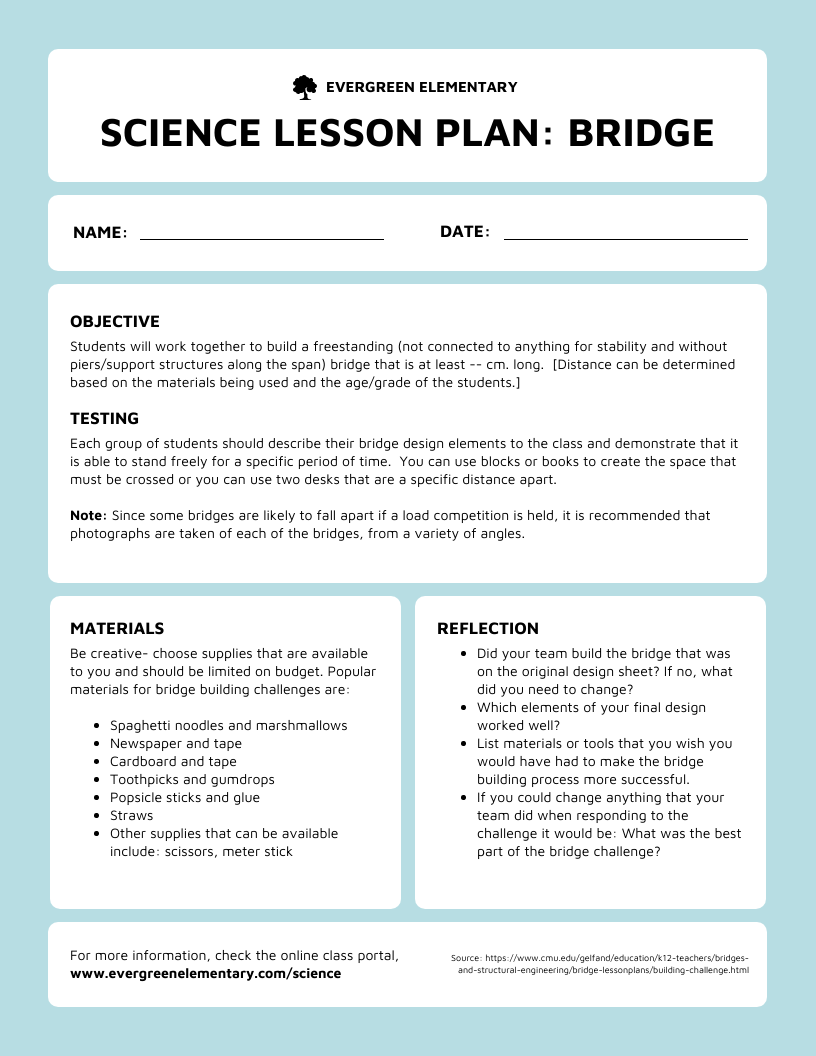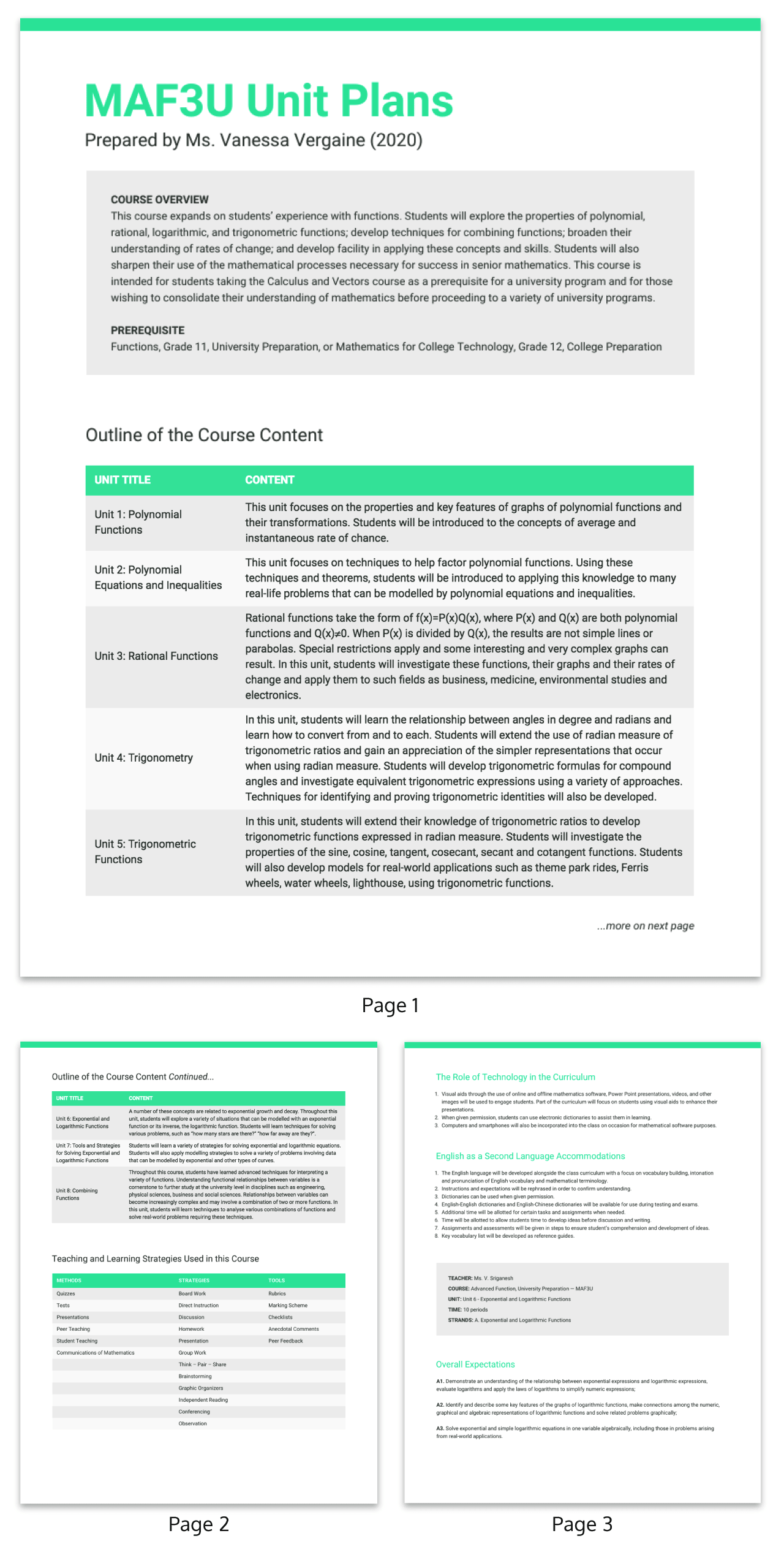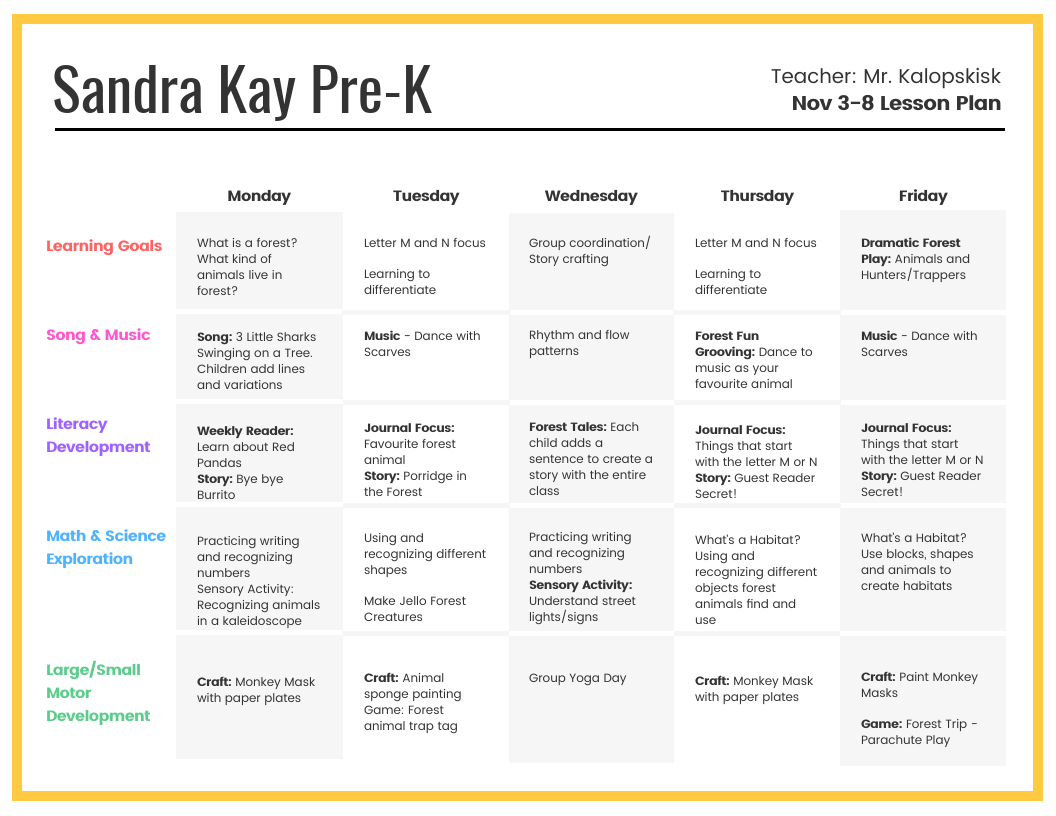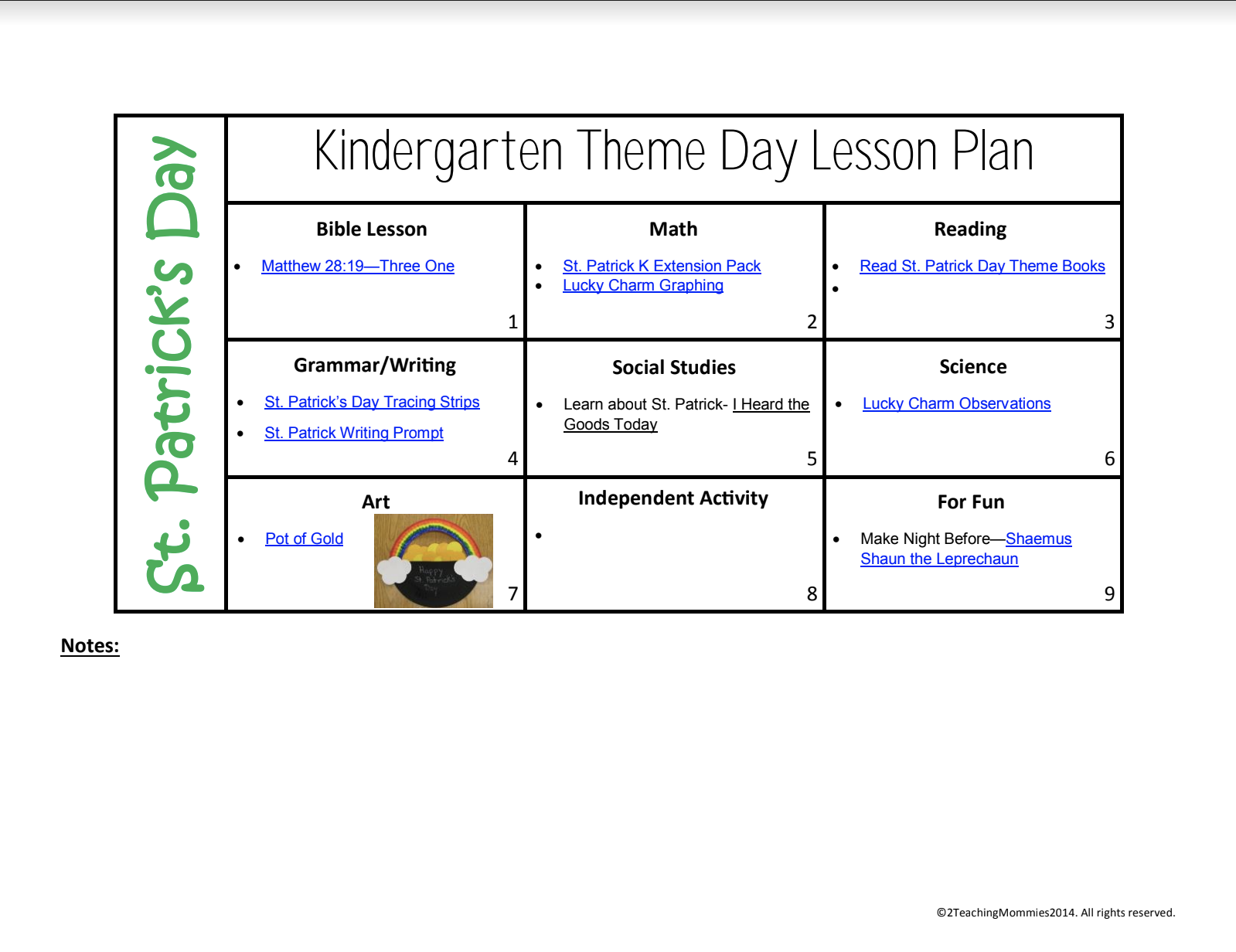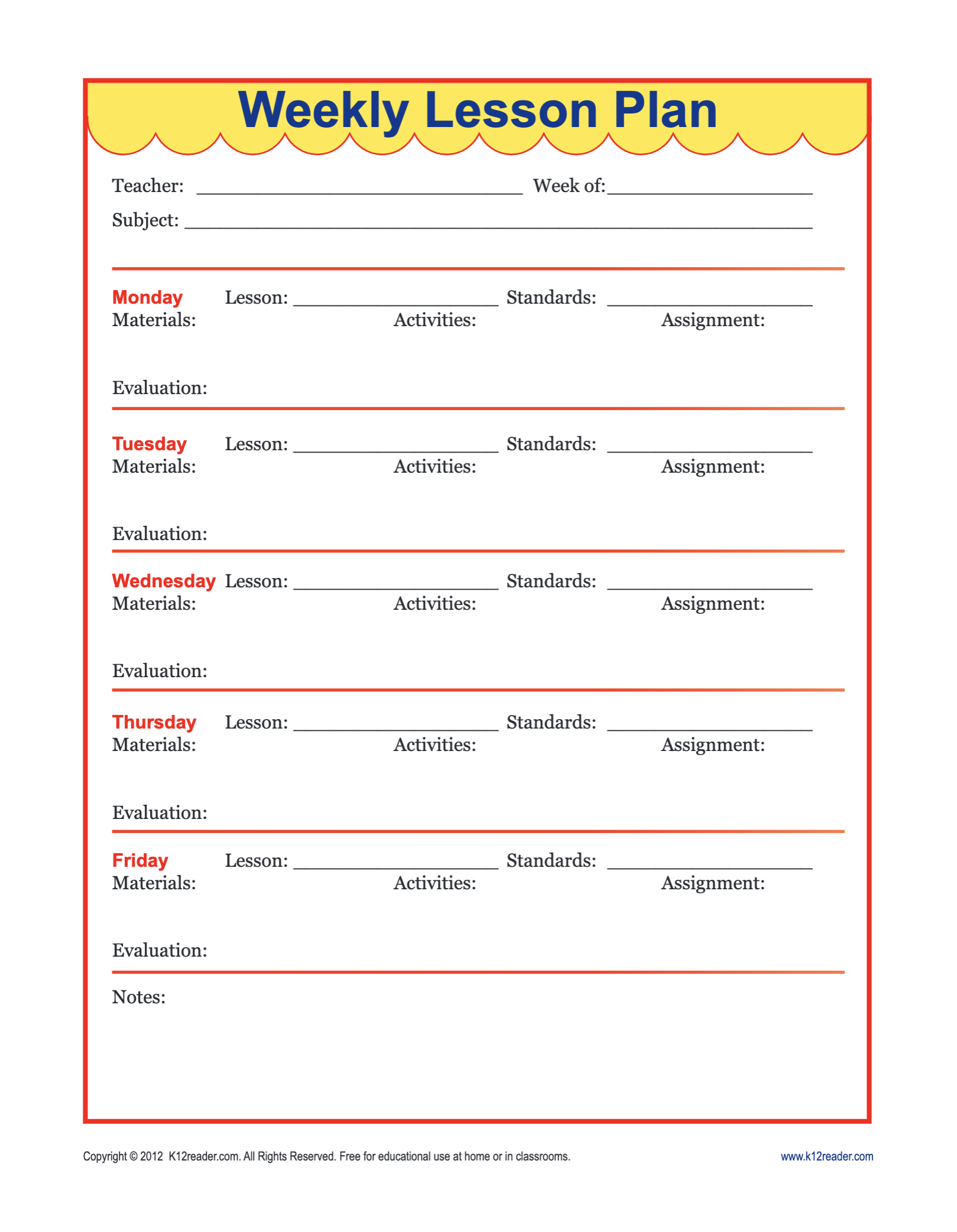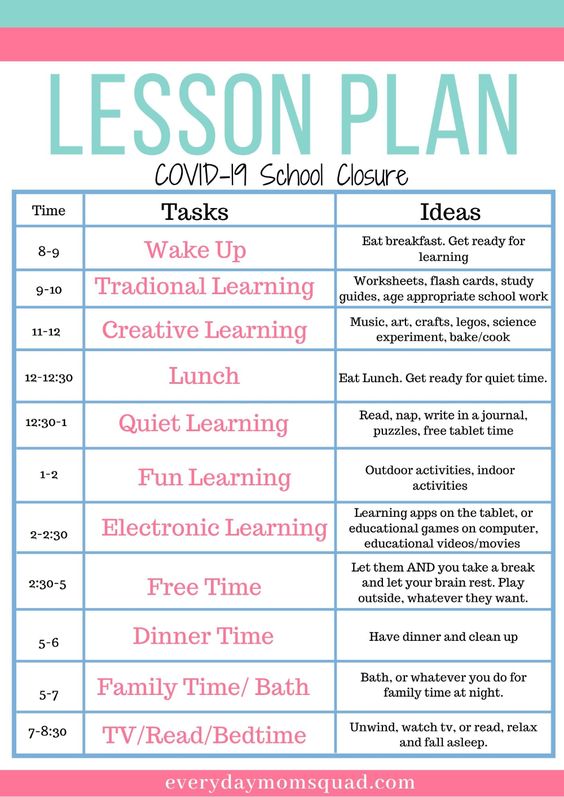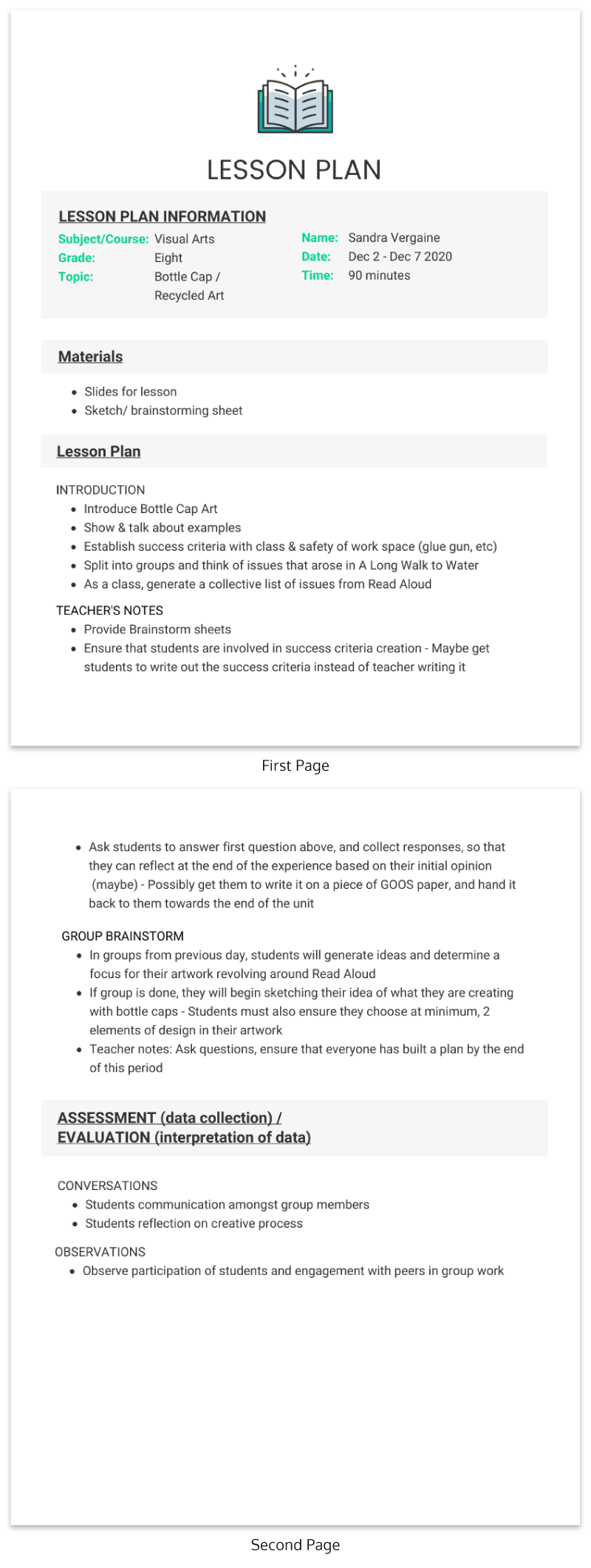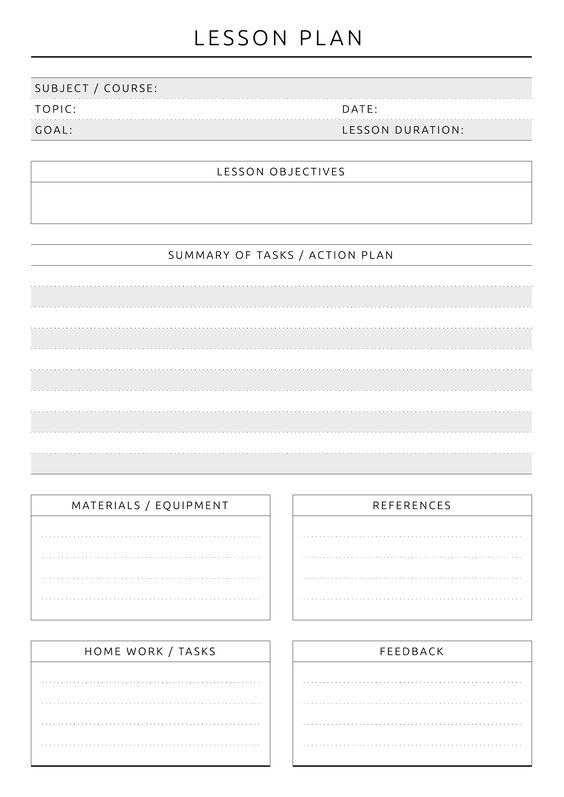Lesson plans are the best way to deliver an effective and engaging lesson. Lesson plans also help keep you on track to ensure that your learners hit their goals and targets, in line with your course curriculum.
But sometimes in the high-pressure world of education, it can be difficult to find the time to create inspiring lesson plans on your own.
We’ve gathered together 28 of the best lesson plan examples on the internet that you can use to ensure your lessons are insightful and inspiring.
Table of Contents (click to jump ahead):
- What is a lesson plan?
- What is included in a lesson plan?
- Science lesson plans
- Math lesson plans
- English lesson plans
- History lesson plans
- Art lesson plans
- Preschool lesson plans
- Kindergarten lesson plans
- Elementary lesson plans
- Middle school lesson plans
- High school lesson plans
- eLearning lesson plans
- Simple lesson plans
- FAQs about lesson planning
What is a lesson plan?
A lesson plan is a document that outlines the content of your lesson step-by-step. It’s a list of tasks that your students will undertake, to help guide your teaching.
A lesson plan is usually prepared in advance and can either cover a one-off activity, an entire lesson, a unit or course, a day, or a week.
Lesson plans are primarily documents that are printed, or saved as a PDF for a teacher to follow. You can create your own lesson plan layout or pick a predesigned lesson plan template.
You can also use a special platform Studoсu, that allows you to store all materials online in one place from any university.
What is included in a lesson plan?
Lesson plans primarily include a schedule of activities that you will deliver in the lesson. Some lesson plans also include additional sections for more thorough planning.
A general format of a lesson plan can be like this:
- Lesson activities
- Lesson materials
- Lesson objectives
- Lesson goals
- Lesson feedback
If you want to learn how to write a lesson plan in general, check out this section. Otherwise, keep scrolling to see different lesson plan samples and ideas, with tips on how to write the best lesson plan you can as well as templates you can edit right away.
Science lesson plans
Planning a science lesson can mean anything from experiments, to monitoring, or to diagramming and labelling. Creating a science lesson plan is important to ensure that all of the students are effectively learning whilst remaining engaged and safe.
Following a template, like in the science lesson plan examples below, can help make sure that your science lessons run smoothly.
1. Provide a space for reflection in your science lesson plan
Whilst a lesson plan is a place to schedule your activities, it can also be a great document to refer back to when planning future sessions. Adding a reflection section in your science lesson plan can be a great way to add notes about what worked and what didn’t within your lesson, for future reference.
2. Break projects down into sections of deliverables
If you’re conducting a difficult lesson, such as a hands on science project, it can be handy to help yourself and your students by outlining expectations. A checklist can be a great way to make your science lesson plan as effective as possible.
In this lesson plan example, the deliverables have been broken into easy-to-follow checklists.
3. Use illustrations to bring your lesson plan templates to life
Your lesson plans should inspire you, not bore you! Using illustrations is a great way to bring your lesson plans to life.
In this sample lesson plan, the teacher has used colorful and playful illustrations to reflect the content of the lessons.
Math lesson plans
Teaching math can sometimes seem like a struggle when trying to engage learners in difficult material. Math can sometimes feel “dry” or repetitive, and students can seem easily frustrated.
Math lesson plans are the key to bringing numbers to life for your students, and are an essential for any math lesson or course. Check out these lesson plan ideas for writing the best math lesson plan, as well as some templates you can edit.
4. Use pops of color in your lesson plans
Just because your lesson plan tackles a complex subject doesn’t mean it has to be boring. Using a splash of bright color can help make your lesson plan engaging.
In this lesson plan example a mint green color has been used to help break up the design. You could color code different subjects or units if you have multiple classes to teach.
5. Break your lesson plan into sections to make it easy to follow
Lesson planning can be complex, with lots of different sections of the lesson to think about. Being properly prepared for any eventuality in your lesson starts with good planning. By using sections, like in the lesson plan example below, you can cover all of your bases.
When lesson planning, consider the following:
- Lesson objectives
- Lesson materials
- Lesson discussion questions
- Activity options for multiple group sizes
- Lesson notes or feedback
In this math lesson plan activity the teacher has thought through all of the needs of their class.
English lesson plans
Imagination, drama, romance and tragedy. English lessons have it all. But they can also be complicated to teach, with many moving parts to any one lesson.
Creating an English lesson plan is the best way to keep track of all the learning strands and activities that are needed for learning success.
Like you’ll see in the English lesson plan examples below, creating engaging activities to a strict time schedule is perfectly possible with enough planning.
6. Use your lesson plan to schedule each activity by the minute
Any teacher will know the feeling of reaching the end of your material with 10 minutes left in the lesson.
Avoid running short (or running over!) in your lessons by planning down to the minute. The English lesson plan example below measures out timings for each activity so you finish perfectly on time.
You can use a timer on your interactive whiteboard, or get students to time themselves. Scheduling is a great skill to incorporate into any lesson plan.
7. Think outside the box when lesson planning
When lesson planning, the world, or at least the internet, is your Oyster. Instead of just teaching vocabulary, use scavenger hunts, word searches, or story activities.
Try picking a new activity and building your lesson around that. In the lesson activity example below, Merriam-Webster has a dictionary scavenger hunt that will keep students engaged and entertained throughout your English lesson.
8. Highlight your lesson objectives at the top of your lesson plan
Your learning objectives should guide your lesson planning, not the other way around. Especially in subjects like English, focusing on your objectives first can make sure your students are learning effectively.
In this sample lesson plan that focuses on analyzing a film for an English class, the learning objectives are housed within the same section as the lesson plan overview, right on the first page:
If you want to learn how to write an actional learning objective, check out this post on learning objective examples.
History lesson plans
No matter if you’re teaching the near past or the ancient history, planning History lessons is essential for a successful session.
Using common teaching resources such as timeline infographics, or imaginative play and learning are exciting ways to make your History lesson plans exciting.
9. Prepare for history lessons with a history timeline infographic
Teaching history in an effective and engaging way relies on the teachers ability to bring the past back to life. For some students, mentally visualizing history can be difficult. A timeline infographic is a great way to teach historical events.
When planning your history lesson, make sure you have all of your timelines sorted. You can either prepare your history timelines in advance or get the students to create their own history timeline as part of the lesson activity.
Venngage has a whole range of timeline infographic templates that are easy to customize.
Want to learn more about how to create a timeline infographic? Check out the video below:
10. Use themes and historical events to enrich your lesson planning
When planning your history lessons, look for topical themes or historical events that you can anchor your lesson plan around.
In the lesson plan example below, the teacher is using Black History Month as an anchor point for their students’ learning.
Teaching the historical significance of Black History Month, and engaging students in related learning activities throughout February is a great way to contextualize current affairs. There are plenty of resources online to help create your Black History Month lesson plans.
Related Reading: Looking for other global holidays and events to theme your lessons on? Check this Ultimate List of Holidays.
Art lesson plans
Art lessons lend themselves to creative and visual learning, so your Art lesson plans should be creative and visual as well.
Use bright colors, patterns, icons, and graphics to create a truly engaging visual art lesson plan, like in the examples below.
11. Incorporate learning examples in your art lesson plans
Art lesson plans can be one of the most fun to create. Art as a visual medium lends itself to an exciting and decorative lesson plan.
In the art lesson plan example below, the teacher has inserted visual examples to use during the lesson directly into their lesson plan. Collecting all of this information in one place means that you can quickly refer back to your lesson plan mid teaching.
12. Be creative with your art lesson plan design
If you’re creating an art course, you’re probably a creative person. Why not let that creativity shine in your lesson plan templates?
Fun illustrations and patterns have been used in the lesson plan sample below to create a visually appealing lesson plan design.
When picking colors for your lesson plan design, some schools will need to be aware of color connotations. Certain colors should be avoided due to gang or rivalry associations. Some schools will also want to ensure that all materials produced fit within your school colors.
13. Use colors and patterns in your art lesson plan designs
As well as colors, patterns can be used, like in this art lesson plan example, to create interest in your lesson plan design.
Picking a patterned but simple background is an easy way to add depth to any lesson plan design.
Preschool lesson plans
Preschool is an exciting time for learning. Shaping young minds is a rewarding experience, but it can sometimes feel like juggling too many balls at once.
With so many different essential key skills to teach, using a thorough Preschool lesson plan is important for making sure that your learners progress stays on track.
14. Break your Preschool lesson plans into learning sections
Preschool curriculums can be complex, covering multiple areas of crucial childhood development.
Hellp visualize each of these areas in their own right by creating a preschool lesson plan that takes a broad overview.
By breaking your lesson plan into learning sections, like this Preschool lesson plan example, you can get a glance at all elements of your students learning at once.
15. Get an overview of your week with a weekly lesson plan
A weekly lesson plan works great for preschool education planning, as it helps you identify and build lessons around common themes or goals. In the lesson plan template below, weeks have been broken down into different areas of focus.
16. Use icons in your Preschool lesson plan
Using icons is a great way to communicate visually. Icons are easy to understand, especially when you’re skimming a document.
Using icons in your preschool lesson plans, like this example. Not only do the icons help communicate the lesson themes, they also make the lesson plan example super engaging and fun.
Using icons can also be a great way to help students who struggle with non-visual learning. For more ways to improve your lesson accessibility, check out this guide to creating a Color Blind Friendly Palette.
Kindergarten lesson plans
When teaching Kindergarten can be hectic. We all know that meme “teaching Kindergarten is like using a blender without a lid”.
Staying organized is super important, and having thorough easy to follow Kindergarten lesson plans is one way to make sure your teaching stays on track.
17. Use themes to help plan your Kindergarten lessons
Help your Kindergarteners embrace learning by using themes to plan their education. Themes are a great way to work through lots of different learning activities under one thematic umbrella.
This Kindergarten lesson plan example uses St Patrick’s Day as its thematic anchor, and bases Math, Art, Science, and more off of one common theme.
18. Make your lesson plans easy to skim
We’ve all been in a spot when our mind goes blank, and we need to quickly refer back to our lesson plan. Especially if you’re interviewing or teaching in front of others.
By making your lesson plans easy to skim, you can quickly regain your train of thought and continue conducting a successful lesson.
In the sample lesson plan below the teacher has used simple blocks, checklists, and icons to help ensure their lesson plan is easy to understand at a glance.
Elementary lesson plans
When creating Elementary school lesson plans, you need to make sure that you’re keeping a good overview of many different subjects at once.
Having a clear, easy to understand Elementary lesson plan, like in the examples below, is really important for making sure that all your learning objectives are being met.
19. Break your elementary lesson plans into day and subject sections
Elementary students will often be studying various topics and subjects at once, and keeping an overview of this can be difficult. By creating a weekly lesson plan you can make sure that your students stay on track.
In this lesson plan template, subjects and activity have been split across the days, with simple summaries of each section within the lesson plan.
20. Include notes sections in your lesson plans
Planning a lesson is important, but reflecting on a lesson is essential. Too often it can be easy to get sucked up into the next lot of planning, but taking time out to properly assess how the lesson went is vital.
Adding notes sections to your lesson plans, like in this weekly lesson plan example, is a great way to remind yourself to evaluate as you go.
Evaluating yourself and your lessons can be a daunting task. Applying various evaluation strategies, such as a SWOT Analysis, is an easy way to give your evaluations focus.
Middle school lesson plans
Middle School is a time for make or break for many learners. Skills that they learn in Middle School carry them through life, and it can be a huge weight to carry. But teaching Middle School can also be incredibly rewarding.
In your Middle School lesson plans, like in the templates and examples below, it’s important to focus on success and simplicity.
21. Make note of what success looks like in your lesson plan
In teaching quite often the end goal is not for the students to just arrive at the correct answer, but to understand the process of getting there. Having this mentality in your mind whilst lesson planning is an excellent way to ensure your students are learning effectively, and that your maximizing your teaching impact.
Add a section to your lesson plans as to what success looks like for you and your students like in the Middle School lesson plan template:
22. Color code your lesson plan for ease of use
Colors can be a great differentiator in content, and color coding your lesson plans is a great way to make information pop. In this lesson plan example, each day has a different color which makes planning and evaluating much easier.
Related Reading: What Disney Villains Can Tell Us About Color Psychology
High school lesson plans
Lessons in High School are the ideal time to set your students up for lifelong success. Ensuring that your High School lesson plans account for success and reinforcing skills is one way to deliver the best education for your learners.
23. Include indicators of skill in your High School lesson plans
In High School, lessons plans tend to be more advanced. In the High School lesson plan example below, the teacher has included a section for indicators of skill.
Indicators of skill are a great way to measure your students’ understanding of a topic, and can be used to help inform your planning and teaching. Add two or three skill indicators into your lesson plans to ensure you know how to identify which students may need additional support from you in teaching.
You can also scroll back to the Math lesson plans section for more ideas on high school lesson plan templates.
Remember how we mention you should include timelines in your lesson plan? Well, for a high school lesson plan, you can include a timeline template like this one to make sure your students understand all the dates required for their school project:
eLearning lesson plans
eLearning, distance learning, remote learning, digital learning. Whatever you’re teaching, lessons that don’t take place in a classroom come with their own unique set of challenges.
Engaging learners from behind a screen, or creating lessons that can exist outside of a traditional classroom environment can be difficult. But proper eLearning lesson plans can help you navigate non-traditional learning environments.
24. Break your eLearning lesson plan into activities or subjects
With so many people shifting to remote or digital learning keeping track of all of your separate subjects can be difficult. Creating an eLearning lesson plan that is broken into smaller chunks, with space for each topic, is an easy way to keep learning on track.
In this eLearning lesson plan example subjects are color coded and broken into small blocks.
For more examples of eLearning lesson plans, check out this post on course design templates.
Looking for more eLearning resources?
- 7 Ways to use eLearning Infographics
- Digital Learning Communication Resources
- What is an Infographic?
- 10 Types of Visual Aids for Learning
25. Use a daily schedule when learning remotely
Learning remotely can be a big change for both teachers and students. One way to keep your learning on track is with an easy-to-follow daily schedule. Using a daily schedule as a lesson plan, like in the example below, is one way to maintain a routine during difficult times.
As well as scheduling within your lesson plan, you can also create a calendar to help keep your students on track.
26. Allow time for creativity and fun in your lesson plans
One of the biggest benefits of eLearning, Remote Learning, and Digital Learning is that you can stray from the confines of a traditional classroom.
Giving students the opportunity to explore topics creatively can be one way to engage your learners in difficult times. Every student will have a different learning style, and by scheduling structured creative learning activities you can ensure that your entire class has the opportunity to thrive.
Simple lesson plans
Sometimes simple is best—especially when it comes to lesson planning. When you’re panicked mid-teaching, having a simple and straightforward lesson plan that you can take a quick glance at it can be invaluable.
27. Keep your lesson plan simple for stressful situations
When performing under pressure, staying simple is usually the best option. Using a clean and modern lesson plan design is one way to ensure that you can stay focused on what matters: teaching.
Simple doesn’t have to mean boring, though. Using good design principles and following one or two graphic design trends means that your simple lesson plan template can still look smart.
28. Use an icon to help differentiate different subject lesson plans
Icons are an easy way to differentiate your lesson plans by subject or topic. In the lesson plan example below, a large book icon has been used at the top of the page so that you can quickly see that this is an English lesson plan.
You could use an icon for each subject you teach, or use icons to tell a story. You could even replace the icon with a photo of your lesson materials!
29. Use an action plan approach in your lesson planning
In the simple lesson plan example, the tasks in the lesson plan have been labeled as an “action plan”. By keeping the lesson plan design simple, the focus is really on the content of the lesson plan.
Creating an action plan when teaching your lessons is a great mindset for creating engaging lessons and proactive teaching.
Lesson plan FAQ
How do you write a lesson plan?
When writing a lesson plan, start by outlining the learning objectives—what you want your students to take from the session and work backwards. By focusing on the end goal, you can schedule activities that help your students have a successful lesson.
Once you’ve got the objectives down, you can start planning the specific activities you would like to include in the lesson or the course. Apply a top-down method: plan on a course level the lessons you’re going to include, and then go deeper and think about the activities you would like to include in each lesson.
You should then work on the exercises or projects you would like your students to take on. These should serve two important purposes: allowing the students to apply the knowledge they learn in class and allowing you, the teacher, to assess students’ understanding of the materials. Think about the best way to engage students and make sure you include a variety of these activities besides just tests or exams, like quizzes, group discussion, group projects and so on.
Once you’ve got all these noted down, you can start arranging all the lessons and activities in a meaningful and logical order as well. This applies to the activities within a single lesson too. Answer these questions:
- How much time do you have for the whole lesson?
- What do you plan to start and end the lesson with?
- How much time do you have for each activity?
- If you still have time after all the activities are done, what are you planning to do?
- If you run out of time, what activities are you planning to drop?
What are the 5 parts of a lesson plan?
The five parts of a lesson plan are: warm up, introduction, skill learning, cool down, and reflection.
What are the types of lesson plans?
There are many different types of lesson plans, including: daily lesson plans, weekly lesson plans, unit lesson plans, topic or subject lesson plans, eLearning lesson plans. You can also create lesson plans for different education levels, length of learning period, or based on learner abilities.
To sum up: Use a lesson plan template to write an actionable and easy-to-follow lesson plan
Writing a lesson plan from scratch can be difficult, which is why Venngage has created tons of lesson plan templates you can edit easily. You can also draw inspiration from the different lesson plan examples in this post to customize your lesson plan template.
Simply create a Venngage account, pick the template you want and begin editing. It’s free to get started.






























